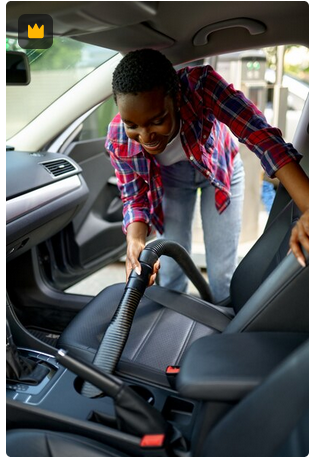Driving is a daily activity for many people around the world, providing convenience and freedom of mobility. However, it also comes with certain risks. By adopting defensive driving techniques, motorists can significantly reduce the likelihood of accidents and protect themselves and others on the road.
In this article, we will delve into the art of defensive driving, providing you with comprehensive guidance on how to develop and maintain a defensive mindset behind the wheel.
1. Understanding Defensive Driving
1.1 The Concept of Defensive Driving:
Defensive driving is a proactive approach to road safety, involving anticipating and mitigating potential risks on the road. It goes beyond simply obeying traffic laws; it means being aware of the actions of other drivers, pedestrians, and road conditions to prevent accidents.
1.2 The Benefits of Defensive Driving:
– Reduced risk of accidents: Defensive driving techniques help drivers avoid hazardous situations and react appropriately to unexpected events, minimizing the chances of collisions.
– Personal well-being: By adopting defensive driving habits, drivers enhance their own safety, as well as the safety of their passengers.
– Lower insurance premiums: Many insurance companies offer discounts to drivers who have completed defensive driving courses, as they are seen as responsible and less likely to file claims.
2. Building a Defensive Mindset
2.1 Stay Alert and Focused:
– Avoid distractions: Put away your phone, refrain from eating or grooming, and keep your focus solely on the road.
– Get enough rest: Fatigue impairs judgment and reaction times, so make sure you are well-rested before driving.
2.2 Maintain a Safe Distance:
– Keep a three-second following distance: Maintain a cushion of space between your vehicle and the one in front of you. In adverse conditions, increase the distance to allow for longer reaction times.
– Increase following distance at higher speeds: Adjust the following distance as speed increases to provide ample time to react to sudden stops or changes in traffic flow.
2.3 Use Defensive Positioning:
– Stay in the correct lane: Position your vehicle in the lane that allows for the smoothest and safest flow of traffic.
– Avoid blind spots: Check your mirrors frequently, and when changing lanes, use turn signals to inform other drivers of your intentions.
2.4 Anticipate and Predict:
– Scan the road ahead: Continuously monitor the road, traffic signs, and signals, looking for potential hazards or upcoming changes.
– Watch for erratic behavior: Be vigilant for drivers who exhibit signs of aggressive driving, such as tailgating or sudden lane changes.
3. Responding to Hazards
3.1 Be Prepared for the Unexpected:
– Keep a safety cushion: Maintain an escape route or open space beside your vehicle to maneuver away from potential hazards.
– React to road conditions: Adjust your driving technique according to weather conditions, such as rain, snow, or fog.
3.2 Use Defensive Maneuvers:
– Braking techniques: Practice controlled and progressive braking to maintain vehicle control and prevent skidding.
– Steering techniques: In emergency situations, use evasive steering maneuvers, such as swerving, to avoid collisions.
3.3 Interact Courteously with Other Road Users:
– Yield appropriately: Respect right-of-way rules and yield to pedestrians, cyclists, and other vehicles when required.
– Use signals and gestures: Signal your intentions early, use your horn cautiously, and avoid confrontations with aggressive drivers.
4. Continuing Education and Improvement
4.1 Defensive Driving Courses:
– Enroll in a defensive driving course: These courses provide valuable knowledge and techniques to enhance your defensive driving skills.
– Stay updated with traffic laws: Laws and regulations change over time, so it’s crucial to stay informed about current traffic rules and requirements.
4.2 Regular Vehicle Maintenance:
– Keep your vehicle in optimal condition: Regularly inspect and maintain your vehicle, including tires, brakes, lights, and fluid levels.
– Ensure clear visibility: Replace worn wiper blades, clean windows, and mirrors for optimal visibility.
4.3 Stay Informed about Road Conditions:
– Check weather and traffic reports: Before heading out, check weather forecasts and traffic updates to anticipate potential road hazards or congestion.
– Use navigation tools: Utilize GPS or smartphone apps to plan your route and receive real-time updates on traffic conditions.
4.4 Develop Defensive Habits:
– Practice patience: Avoid aggressive behaviors such as tailgating, speeding, or unnecessary lane changes.
– Be courteous: Yield to others, use your horn sparingly, and respect the rights of pedestrians and cyclists.
Conclusion:
Adopting a defensive driving approach is crucial for ensuring road safety. By staying alert, maintaining a safe distance, and anticipating potential hazards, drivers can greatly reduce the risk of accidents. Additionally, responding appropriately to unexpected situations, interacting courteously with other road users, and continuously improving through education and maintenance are key aspects of defensive driving. Remember, defensive driving is not only about protecting yourself, but also about creating a safer environment for everyone on the road. So, embrace the principles of defensive driving and make a positive impact on your driving experience and the well-being of others. Stay safe, drive defensively, and enjoy the journey!











+ There are no comments
Add yours